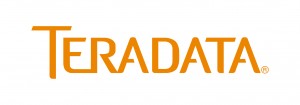GovLoop’s hosting its Fifth Annual Government Innovators Virtual Summit, an all-day, virtual event with five different online trainings, networking opportunities and resources to help government do their job better — and we’re recapping each session for you. Head here to read write-ups from the other trainings.
As everyone has probably heard by now, data analytics is changing the way governments make decisions. But while the benefits of data analytics have often been touted, it can still be difficult to know how to incorporate data into your agency operations and what to look for in analytics tools.
Rory Schultz, Client Executive for the U.S. Department of Agriculture, Amen Ra Mashariki, Chief Analytics Officer for New York City, and Alan Ford, Director of Presales Consulting for Teradata Government Systems, sat down for GovLoop’s Government Innovators Virtual Summit to shed more light on how analytics can improve government decision making.
As a city of over 8.5 million people, New York City produces a lot of data. As part of the Mayor’s Office for Data Analytics (MODA), Mashariki works for the civic intelligence arm of the city government, supporting agencies in the effective delivery of services and helping them grow their own analytic capabilities. Three of their current projects highlight the variety of ways analytics can improve services.
MODA works with the Department of Small Business Services (SBS) on two separate projects. The first, focused on measuring success, looks at how long it takes for new restaurants to open in the city. Opening a new business requires regular interaction with the department, so measuring the time between first contact with the department to the opening of the restaurant provides a baseline metric for the effectiveness of new businesses processes. The analytics found that the more new businesses used the department services, the shorter the time between first contact and opening. Before this, there was no metric for measuring the success of these services.
The second project with SBS focuses on providing situational awareness. Many small businesses are not aware of all relevant regulations and are forced to pay fines if they violate any of them. In order to avoid this, SBS aims to provide proactive education for small businesses on regulation compliance. MODA compiles data from different agencies to determine where such outreach would be most effective.
Similarly, MODA works with Housing Preservation and Development on data-driven enforcement. Landlords sometimes attempt to force out tenants in order to raise prices on rent-stabilized units; this process is called “tenant harassment” and is illegal. By monitoring citizen complaints, building sales information, and other data from different agencies, MODA can identify potential cases of tenant harassment, targeting enforcement efforts.
Mashariki noted that the work MODA does is used on the ground to effect change almost immediately. New York City’s DataBridge helps MODA achieve this goal. The citywide platform collects data from a variety of agencies and integrates and analyzes the information to provide broad insights that can help agencies improve their services.
Schultz’s work with the Food and Nutrition Service shows how data analytics can be used to prevent fraud as well as ensure that gaps in service are filled. The Food and Nutrition Service is responsible for food assistance programs, such as the Supplemental Nutrition Assistance Program (SNAP) and the Summer Food Service Program (SFSP). Forty-four million people receive SNAP benefits each month, so even a small one percent fraud rate leads to significant losses.
Schultz and his team used data analytics and publicly available information to identify patterns in where people use their electronic benefit transfer (EBT) cards and where stores that accept EBT cards are located. Programs like the Anti-Fraud Locator EBT Retailer Transactions (ALERT) database and the Store Tracking and Redemption System (STARS) help FNS manage vast amounts of information and detect potential locations of fraud that can then be investigated.
FNS also uses geographic information system (GIS) data to help citizens locate EBT retailers in their area. In addition, geospatial information can help identify farmer’s markets in a given area, providing citizens with healthy food options near them. GIS can also identify food deserts and other areas of concern, so agencies can promote greater engagement in those regions. Through this type of analysis, FNS exploded SFSP, adding the equivalent of over 5 million meals over the last few years.
The benefits of data analytics are clear, but that doesn’t make implementation any easier. Ford acknowledged the wide variety of options that agencies have in analytics tools, saying that it can be difficult to choose among them. As a guideline, he recommended choosing tools that are well supported. Rapidly changing services can be difficult to keep up with and implement, so an analytics service that can help you along the process is key. In addition, he noted that a good analytics tool will be able to connect databases through a virtual query, bringing the analytics to the data instead of taking the data to the analytics.
For more information on data analytics and other government innovations, register for the virtual summit here and check out the webinar slides here. There are four other great training sessions and incredible opportunities for networking and awesome GovLoop swag. Check out GovLoop’s guide on data analytics in government for even more information.






Leave a Reply
You must be logged in to post a comment.